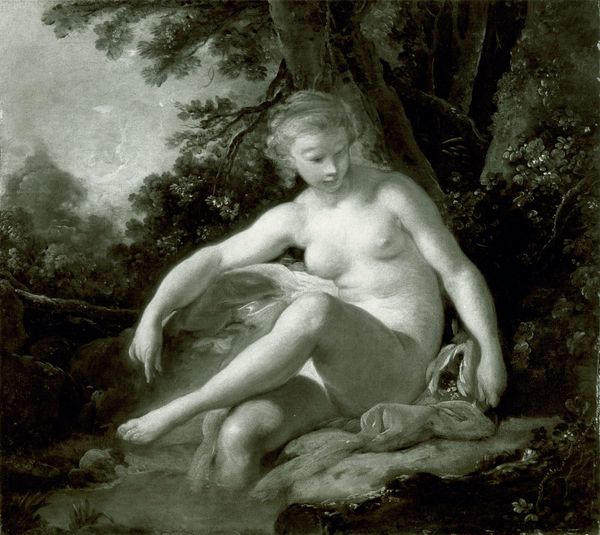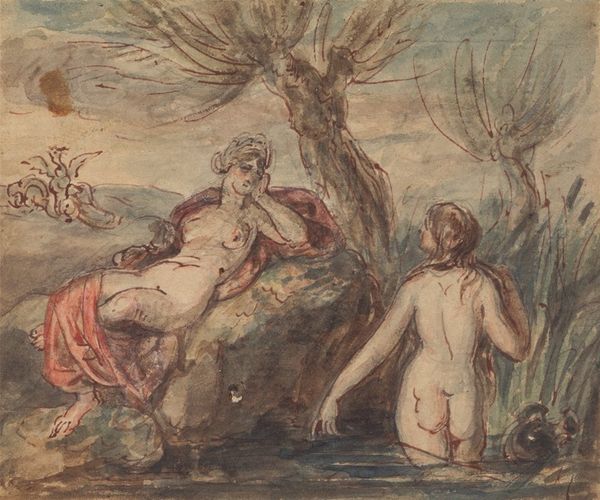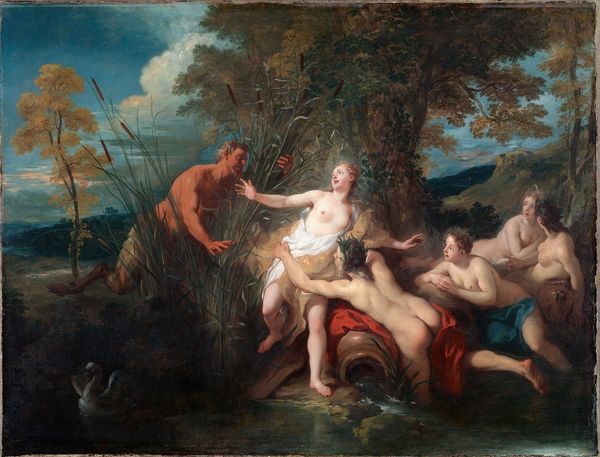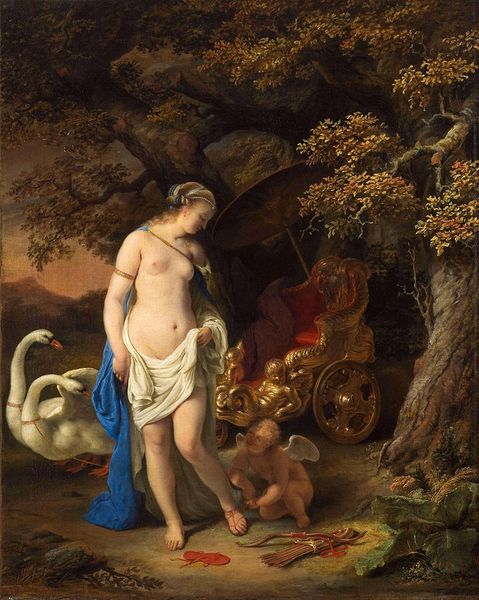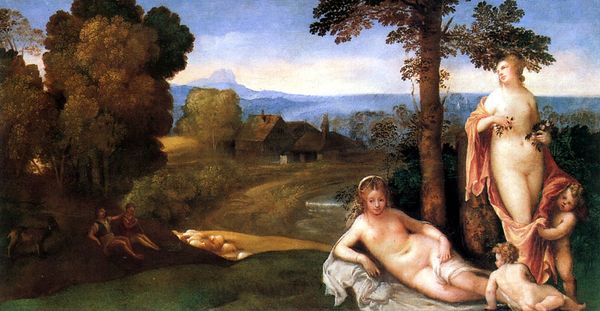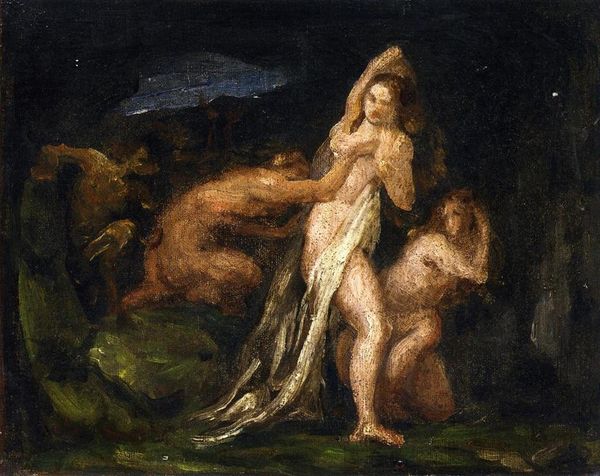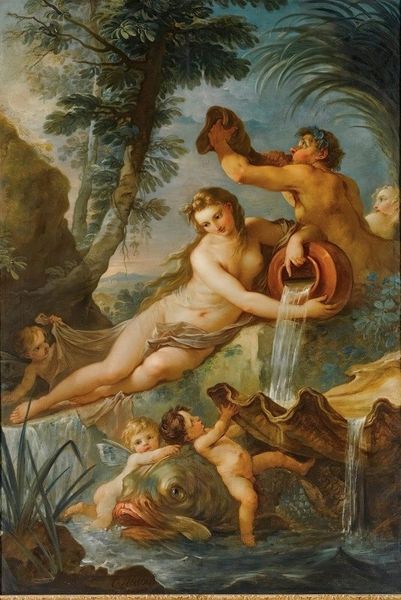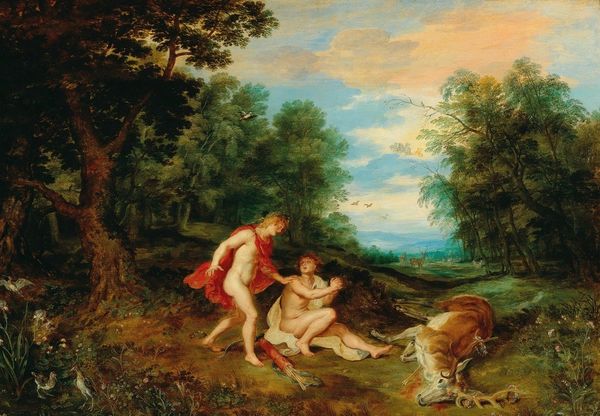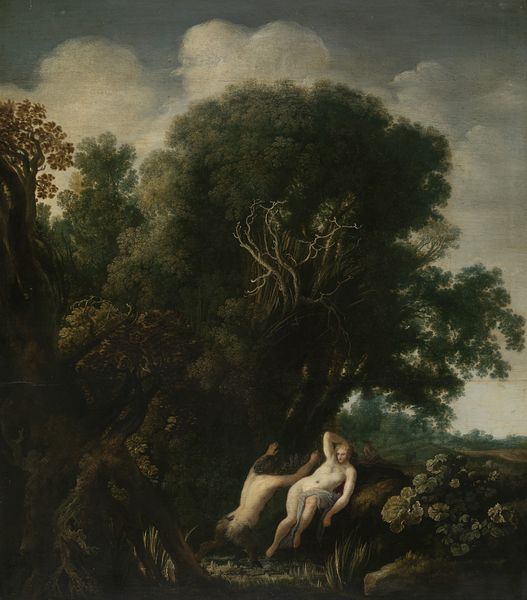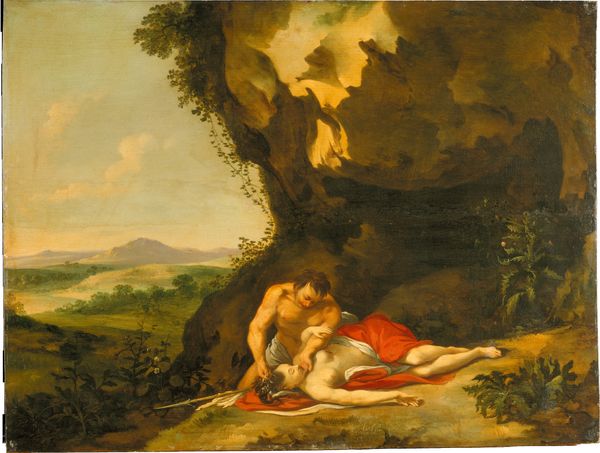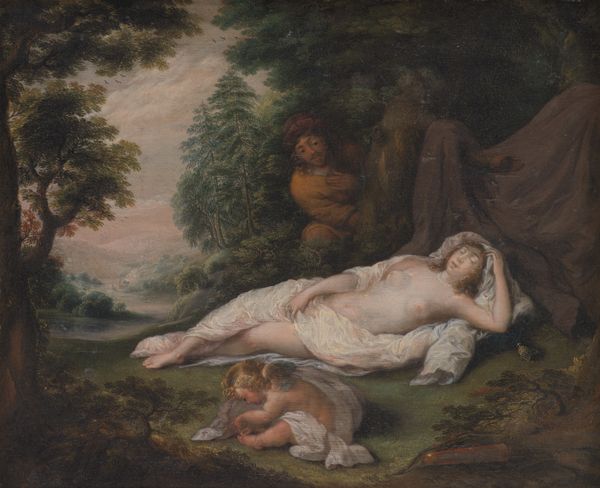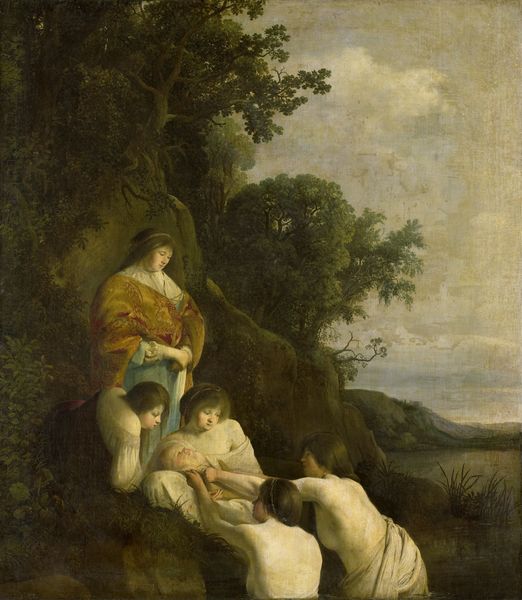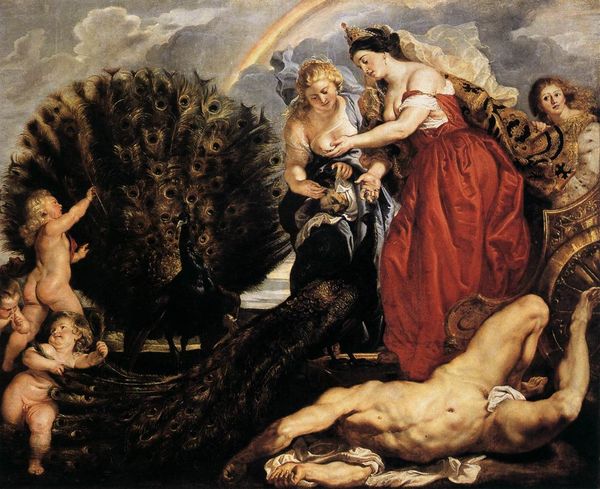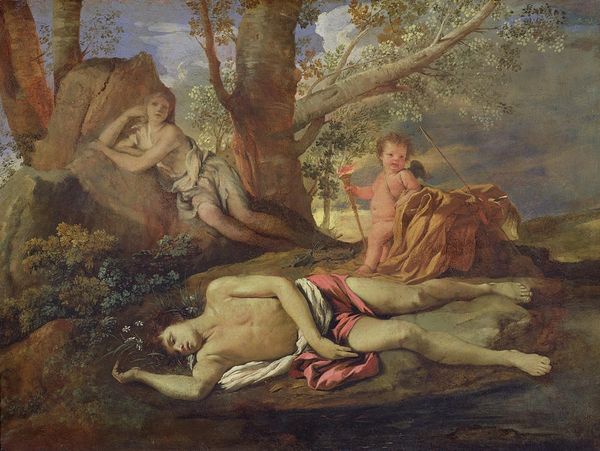
oil-paint
#
allegory
#
oil-paint
#
landscape
#
figuration
#
oil painting
#
female-nude
#
roman-mythology
#
mythology
#
nude
#
rococo
Dimensions: 80 x 101 cm
Copyright: Public domain
Editor: So, this is Watteau's "Diana at Her Bath," painted in 1716, using oil. I’m struck by how vulnerable Diana seems, not like the powerful huntress I imagined. What do you see in this piece? Curator: I see a potent commentary on the objectification of women, even goddesses, within art historical traditions. Consider the Rococo period. While celebrated for its aesthetic beauty, it also upheld a patriarchal gaze that often reduced women to objects of visual consumption. The painting’s sensuality can’t be divorced from that context. How do you feel Watteau is playing with traditional mythological depictions of female power? Editor: I hadn’t really thought about the male gaze, to be honest. I guess I saw it more as a simple scene. The trees are a little sad, in my opinion. Curator: Indeed. But, the vulnerability you initially sensed in Diana also challenges classical ideals. Watteau, while working within artistic conventions, hints at a subtle critique of those power structures. Do you see any elements within the composition that might subvert the dominant narrative? Consider the positioning and posture of the figures or the environment in which the figure appears. Editor: I guess the messy clothing and intimate nature, being at her bath, makes it a very unidealized setting to place the ‘perfect goddess’. That doesn't necessarily go hand-in-hand with 'huntress'. Curator: Precisely! And by placing Diana in this seemingly unguarded state, Watteau invites us to reconsider our assumptions about female power and agency within mythological art. What do we, as viewers, bring to the interpretation? Editor: That's true! Looking at it that way really makes me appreciate how Watteau used existing themes, but still offered subtle challenges to perceptions. Thanks! Curator: Absolutely! It shows that even seemingly classical artworks are entangled in dialogues of gender and representation, ripe for reinterpretation even today.
Comments
No comments
Be the first to comment and join the conversation on the ultimate creative platform.
